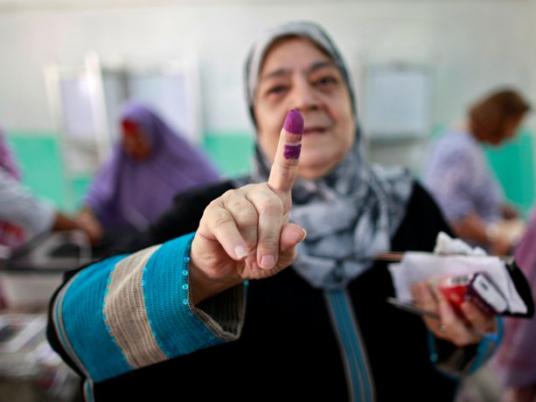Over the last two years, the number of privately owned newspapers in Egypt has multiplied — but so also have the challenges they face.
Talk of cutting losses, increasing copy prices, shutting down publications and going from daily to weekly publication has started buzzing in the industry in recent weeks.
The newspaper industry is increasingly failing at satisfying public demand. Industry specialists identify three main shortages: innovation, sustainability and political will.
No innovation
“The revolution hasn’t changed the essential givens of journalism in Egypt,” says Wael Gamal, an economic journalist.
These givens, he says, entail serious structural and legal problems that are preventing the industry from developing, and causing financial problems for many publications.
Following the revolution, security barriers that limited the number of newspapers in the past were removed. Encouraged by the hike in privately-owned newspapers sales that occurred after the revolution, many investors jumped into the seemingly booming bandwagon.
Gamal says that more reliable coverage of revolution events by privately-owned newspapers knocked state-owned Al-Ahram from the lead, replacing it with privately-owned competitors Al-Masry Al-Youm and Al-Shorouk. The distribution of state-owned newspapers dropped in early 2011 as the public turned to papers like these with a renewed interest in general affairs provoked by the revolution.
Gamal says the curve went back down to pre-revolution distribution rates in the following months. But this time, the same number of readers was distributed over a larger number of newspapers, bringing the average distribution down.
Salah Eissa, journalist and former member of the Supreme Council for Journalism, says the newly found prominence that other media outlets gained after the revolution also took away from the market for newspapers.
“Social media, electronic media and talk shows represent big competition to print journalism,” says Eissa.
After the revolution, many turned to online social media as a reliable news source. And while newspapers used to be the main source of the information discussed in talk shows, the latter was transformed into a medium where political figures often announced their breaking news there first, and newspapers were forced to copy news secondhand from television.
Gamal blames a lack of innovation for the failure to open up new markets for newspapers.
“Everyone was creating the same product. They found newspapers succeeding, so they tried to recreate them without researching the project, while they should have tried to distinguish themselves by offering something new,” says Gamal.
As a result, the market was saturated. With statistics putting newspaper buyers in Egypt at about 1.5 million, Gamal says that instead of exploring new markets, new publications competed with their predecessors for the same clientele.
Amr Elhamy, a managing director in an investment group involved in the publishing business, says the element of exclusivity and scarcity that pushed the sales of privately-owned newspapers before the revolution is not there anymore.
“All papers print more or less the same thing. There’s an abundance of privately owned newspapers,” he says. “The feeling that this paper will tell me something that no other paper will is not there anymore, because there’s an increased margin of freedom for all papers.”
Meanwhile, increasingly narrow segments of society see themselves serviced by print media.
“The journalism industry is practically controlled by two sides, the state through state-owned media and businessmen through privately owned media,” says Gamal.
No alternative models have thrived, such as charity-based newspapers, which renowned projects such as the UK’s Guardian newspaper are based on. The state has not been up to the challenge.
“When a paper is owned by a businessman, the state can control it by threatening to close a business here or helping him close a deal there, but if there is no owner who can be pressured, the paper will be beyond the control of the state,” says Gamal.
With private papers primarily funded by advertisements, he says the business world also often forces newspapers into toeing an editorial line. He says those who attempt different editorial lines or even a different presentation are forced out of the business.
A case in point is Al-Badeel daily, which went bankrupt in 2009 as the business world cut off advertisements because of its leftist direction and focus on business corruption.
There are three agencies that mediate between newspapers and advertisers. Having few options, newspapers are forced to conform to the demands of these agencies.
Describing the agencies mostly conservative, Gamal says they discourage newspapers from experimenting with anything outside the common format adopted in Egypt. He says their editorial interference includes objecting to stories against corporations or even demanding to change the content of the paper.
Among untapped markets that could expand the newspaper business, Gamal mentions local newspapers for governorates and specialized newspapers catering to niche markets. However, the legal restrictions on issuing papers interfere with that, he says.
According to the law, a minimum capital outlay of LE5 million is required to start a daily newspaper. The sum should be deposited in full in a bank before the paper starts publication.
“It’s irrational for an investor to put LE5 million into a newspaper to publish it in Minya, for example. There won’t be enough circulation,” Gamal says.
The large capital outlay pushes investors to cater to the general public, rather than tapping into niche markets.
“The industry won’t move forward until the structure is changed and new investors are introduced. As long as we’re stuck in this cycle of a million and a half buyers and fighting for them, this will weaken the sector,” says Gamal.
No sustainability
Besides the lack of specialization and innovation, the business-model all privately-owned papers follow contributes to their financial difficulties, experts say.
Most privately-owned newspapers depend on state newspapers’ printing and distribution facilities, which puts them under the mercy of their public sector competitors.
With few exceptions, most publications print in the print houses owned by state-owned media institutions Al-Ahram, Al-Akhbar and Al-Gomhurriya.
“If Al-Ahram puts itself first in terms of the timing of printing, for example, there is nothing that the other publications can do, because they have no other options,” says Gamal.
As for distribution, the only distribution company that has a wide reach is owned by Al-Ahram.
Elhamy says Al-Ahram, handling both distribution and printing, halts the business of other publications if their distribution increases to the point where they are perceived as a competitive threat.
He adds that public sector print houses often run a printing operation that is not cost effective, since they are not compelled to make a profit as they have other sources of revenue. Privately-owned papers are thus forced to sustain this extra cost.
“The public sector print houses have unlimited budgets, they continuously sustain operational losses but they will never go out of business, so they’re not worried about the costs,” says Elhamy.
According to a distribution manager at a daily newspaper, because of the printing costs, all papers sell their copies at a loss, hoping to compensate for this through increased advertisements.
He says the magical equation for newspapers to become profitable is having a small number of pages, high circulation and enough advertisements, which is not feasible in the current conditions.
The most that newspapers achieve if they sell enough advertisements and have a low number of returns is to cover their expenses, he adds.
With most of the material used in the paper industry imported, such as the paper, ink and printing machines, the devaluation of the Egyptian pound has also substantially increased the expenses of the papers.
Unlike state newspapers, which rely on printing and distribution businesses for profit, privately-owned newspapers rely entirely on advertisements.
Due to the economic crisis Egypt has endured over the past two years, advertisements have decreased considerably.
“Newspapers went into business and made their calculations based on the information that was accurate at the time — that there was a multimillion dollar advertisement business that could sustain new publications. However, because of the economic crisis, the advertisements are in stagnation,” says Eissa.
No political incentive
As the newspaper sector has yet to become enticing in terms of profits, it is rarely attempted by lone pioneers. In most cases, it is moguls in other industries who decide to start a newspaper.
“For many, it seems to be a project aiming to service their other projects, and it also helps serve their economic interests,” says Eissa.
As the corruption of the old regime began to be uncovered following the revolution, it was revealed that many business figures close to the regime were able to close deals through the pressure of owning an opposition paper. With a new Islamist ruling elite, however, the political power of a newspaper is not proving as lucrative.
“There is no strategic importance in owning a newspaper anymore. Now it is a business and it will be required to generate profits,” says Elhamy.
However, Eissa says that while the direct political use of newspapers may have diminished, investors still have a vested interest in having portals to defend certain ideals.
“There is an awareness among investors that defending general freedoms and resisting the return of dictatorship or the establishment of a religious state is an interest they share with a wide sector of the public that believes in liberal ideals,” says Eissa, arguing that attacks on freedoms can harm the other business interests of investors.
This piece was originally published in Egypt Independent's weekly print edition.




